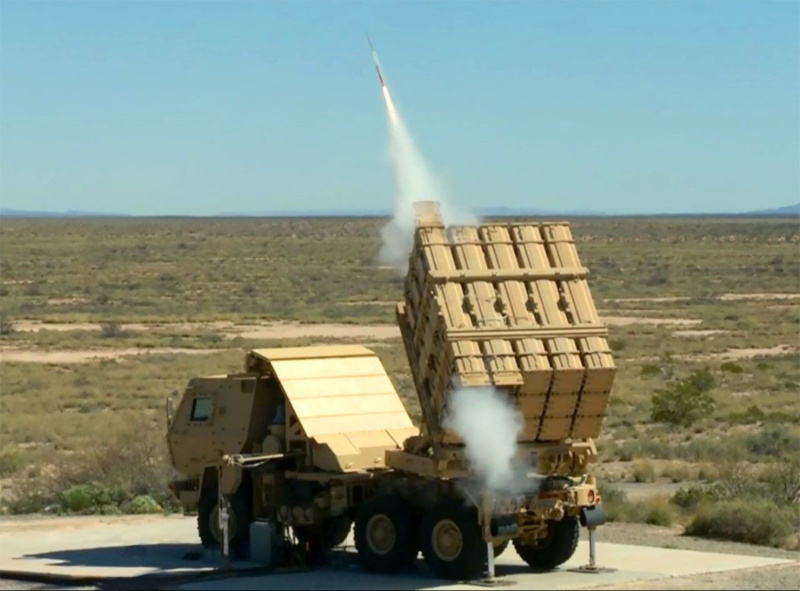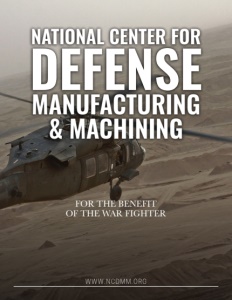National Center for Defense Manufacturing & Machining
For the benefit of the war fighter
Business View Magazine interviews representatives from National Center for Defense Manufacturing & Machining – best practices in manufacturing and procurement.
The National Center for Defense Manufacturing and Machining’s history is rooted in a posture of readiness and adaptability. As a third-party evaluator and implementer of advanced manufacturing technologies (AMT), it was established in 2003 in response to the Department of Defense’s (DoD) need for manufacturing expertise to reduce the overall cost of its defense programs. Today, the NCDMM’s technical team of program managers and project engineers maintains its commitment to revitalizing the nation’s manufacturing industry by implementing solutions that can help its commercial and defense clientele cut costs, increase productivity, improve quality, decrease lead times, and reduce waste.

Gary Fleegle, Chief Operating Officer
In support of this goal, the Center was originally backed by a group of companies mostly headquartered in Western Pennsylvania, where the NCDMM’s own base of operations in Blairsville is situated. “We were early sponsored out of the late Congressman John Murtha’s office with the edict that we would be self-sufficient within three years,” says Chief Operating Officer, Gary Fleegle. “We achieved that target by moving to a fee-per-service model. We are purposefully small as far as internal staff. We have 36 employees to keep the overhead low and the project management costs down. To supplement that, we collaborate with a group of technology providers called Alliance Partners. They’re anywhere from software providers, machine tool providers, tooling providers, automation robotics—the whole gamut across AMT. What we do is work with our customers to identify their opportunities and needs. Our customers are 99 percent DoD, but we also work with the Department of Energy, NASA, and the Nuclear Emergency Research Team. We assemble teams that allow all parties to lend their technologies and services in a way that’s novel, delivers solutions, and either reduces costs or gets the effort back on schedule.”
With growing reliance on automated technology in the manufacturing sector, technicians are being challenged with solving problems faster, better, and at lower costs than others can. That’s why the NCDMM is set on continuously growing its partnership networks; to broaden its ability to deliver leading manufacturing innovations; and to ensure that U.S. defense manufacturing remains globally competitive. “There are competitors in this space,” Fleegle admits. “But they typically in-source their technology capabilities. Where they have internal resources, we use our partner organizations to keep the costs low and increase our production agility and flexibility. That’s our differentiator. Because if you have a hammer, everything looks like a nail. If you have a welder, every problem gets solved by a welding solution. As a not-for-profit, independent, unbiased third-party, we go and assess the opportunities, then work with our partners to identify who’s got the best set of solutions – not necessarily our solutions, but our partners’ solutions, on behalf of the government, the U.S. armed forces, and the DoD. We’re vested in their best interest.”
To recap: the NCDMM procures the contract to do the applied R&D. They manage the partners, who, in turn, manage the project, who, in turn, manage the deliverables. “We do that because, as you can expect, there are a lot of technology providers that don’t have the internal resources to do government contracting and to deal with, historically, what’s called red tape,” Fleegle explains. “The NCDMM has internal capabilities, flexibilities, and efficiencies to be able to navigate that.”
In addition to deploying best-in-class manufacturing solutions, the NCDMM also leads several industry initiatives that promote the advancement and adoption of state-of-the-art manufacturing technologies, including the nation’s leading and collaborative partner in additive manufacturing and 3D printing innovations. “We have an office in Youngstown, OH, out of which we operate our America Makes program, which is the National Additive Manufacturing Innovation Institute,” says Fleegle. “We have another office in Chambersburg, PA, which is right outside of Letterkenny Army Depot. We do a lot of work with the army there. Then we have an office in Huntsville, AL, adjacent to Redstone Arsenal.” In this way, the NCDMM is well poised to make use of public-private partnerships to find fresh opportunities and engage with new DoD customers.

The Aviation and Missile Command and its partners – both the Aviation and Missile Research, Development and Engineering Center and the Program Executive Office for Missiles and Space – met major milestones in 2017 in the development of the Multi-Mission Launcher. (Courtesy Photo)
“As AMT continues to expand and evolve, we’re always on the lookout for new partners,” shares Fleegle. “We like to think of ourselves as being on the cutting edge. We attend various summits and conferences. We also have our existing network of people who understand where the AMT is coming from. We have, as part of our Alliance Partners, a network of universities—that’s typically where the AMT research comes from. We tie into the DoD’s modernization priorities, and we keep ahead of the DoD magazines and events. There are various reports to come out as to how the army wants to adopt AMT, so we’re very in tune with what the needs of our customers are.”
Planning for the company’s future also means anticipating massive retirements as the bulk of the sector’s workforce reaches its golden years, and the younger cohort still requires some convincing that choosing a career in manufacturing is a viable step toward long-term professional success. “As of late, we’ve noticed a renewed interest from the younger generation not to go to a four-year college and get into debt, but to go to a trade school,” offers Fleegle. “Still, there’s a big gap between what we’ll call the grey beards and those young folks. How do you transition that tribal knowledge of how things work from those retirees?”
When human capital is scarce, turning concerns into productive opportunities is a great business model, and that’s exactly the stance the NCDMM is taking vis-à-vis workforce development. “With the advent of the digital age, and these newer employees that are coming in who were born with an iPad or a smartphone in their hand, it seems they fit right in,” Fleegle says. “As we try to take advantage of Industry 4.0, or the Industrial Internet of Things, this new generation doesn’t have to overcome that hurdle. In fact, they embrace that hurdle. Whereas the old-school manufacturer can listen to the machine tool and say, ‘that doesn’t sound right, there’s too much chatter,’ the younger engineer is more apt to hook up that iPad and say, ‘I know exactly why that is.’ It’s kind of an exciting time. As these new technologies come out, they’re readily embraced by this new generation.”
On that note, the NCDMM recently conducted a survey of its staff to measure both employee engagement and strategic alignment with the organization. “Coincidentally, about a third of our staff has been with us for over 10 years,” says Fleegle. “A third of our staff has been with us from 5-10 years, and nine of our staff has been with us 14 months or less. As we dive into another year with those somewhat divergent opinions of what we’ve been able to accomplish in the past, what we’ve done in the middle, and what we’ll be able to achieve in the future, trying to pull those together from a cultural standpoint is no easy feat. Every action we take and decision we make needs to reflect our belief in our mission statement: ‘for the benefit of the war fighter.’ Twenty-five percent of the people who work for us have been with us less than a year. How do you fold them into the mix while also taking advantage of the fact that each one of them comes with a history of ideas? The challenge is knowing we want to leverage those ideas but need to maintain our identity.”
“We always put the war fighter first,” adds Scott Deutsch, Media Relations Manager. “All the manufacturing projects we get involved with contribute to improving, or otherwise have, that element of operational readiness that the DoD prioritizes. Whether it’s ramping up production from a prototype to a full production of a component, or sustainment activities, we’re looked at to enhance the quality of military products and the affordability of the defense manufacturing process. It’s also about maintainability. Can we make more spare parts? Can the supply-chain sustain this platform or product? But, truly, rapid deployment—the readiness aspect of things—is a huge part of all of this. The DoD invests in its manufacturing technology. Those are all priorities for them, regardless of whether it’s a munitions system or an aviation system. Whatever it is, the question we ask remains the same: can we enhance the quality, affordability, maintainability, and rapid deployment of that particular asset or product?” Connecting those dots is the NCDMM methodology.
AT A GLANCE
WHO: National Center for Defense Manufacturing & Machining
WHAT: A non-profit organization serving the defense and manufacturing industries
WHERE: Headquarters in Blairsville, PA
WEBSITE: www.ncdmm.org




